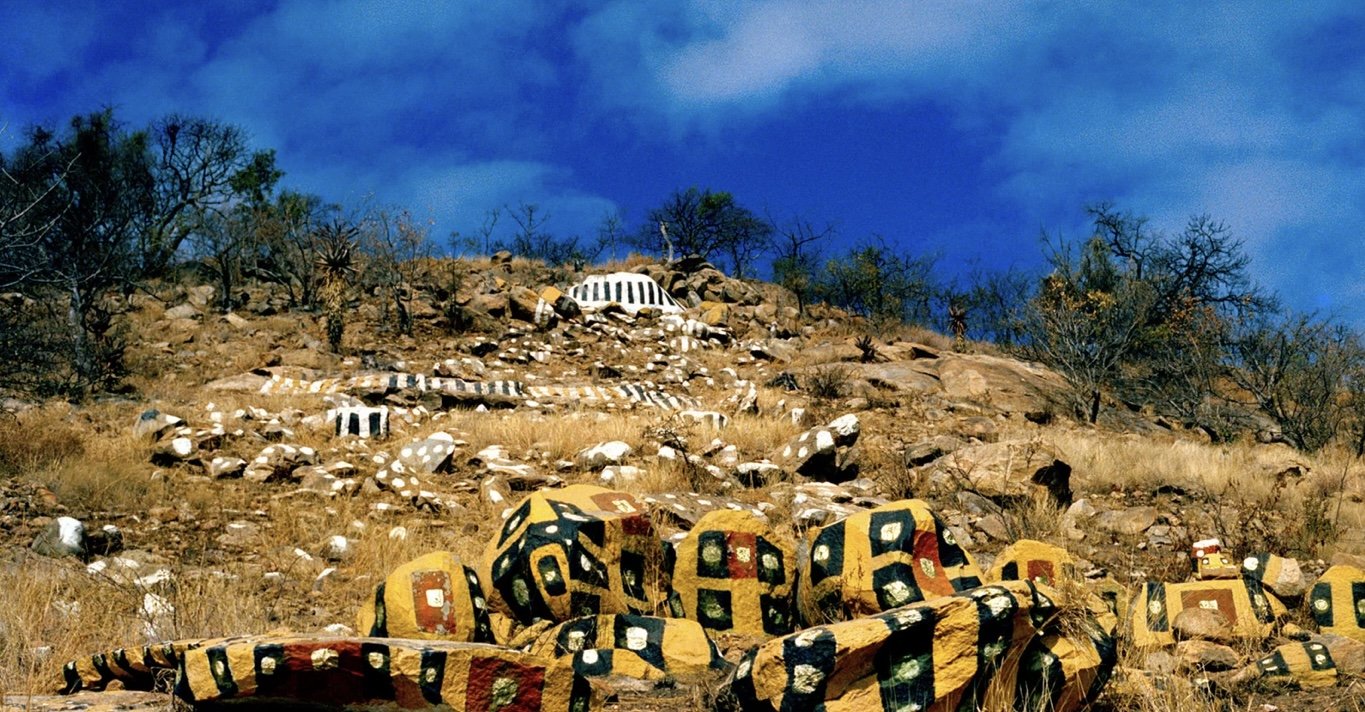the stone garden
Taking an ethological view of aesthetics, antropologist Ellen Dissanayake views art as a tendency to behave in a certain way, a behavior under certain conditions. Art is recognized by her as a biological need, a behavior, and a contribution to survival. She refers to art as 'the stain deeply dyed into the marrow of humans everywhere'.
According to Dissanayaki, humans have the ability to make something special when everything seems to be falling apart, it could be said that an urgency of emotion is experienced to create something beautiful in the midst of everything not being okay, to feel okay. I understand this as hope that can be found in beauty.
Seeing with imagination is what is required to validate the invisible and irrational, which are so often disregarded by the western world. It is possible to reclaim this mysterious world by overcoming the literal mind, which believes only what is visible exists.
Indigenous people, who have a symbiotic relationship with nature, are able to shape their spiritual worlds through their imaginations. To enter this imaginary space within ourselves is to some extent separating oneself from the world of the ordinary, by 'making special', as Ellen Dissanayake describes it, in order to find an inner space.
In this inner space, we experience something that cannot be controlled or explained on a rational level.
A stone garden by Nukain Mabusa is one example of an artist making this idea visible.
Mozambique was Nukain's birthplace. Having lost his beloved mother to a crocodile at the tender age of seventeen, he moved to Soweto, near Johannesburg in the late 1960s. South Africa was under apartheid at the time, and he suffered greatly as a result. Mabusa had a vision one night to prepare 'a garden of Eden' at home. He acted promptly and built his visionary garden in Kaapmuiden, Mpumalanga. Through his vivid imagination, he created a garden made up of painted rocks and stones, which he described as flowers falling from heaven. In his tumultuous out of control life experiences, Mabusa's ritualistic behavior served as a metaphor for self-care and control, as he processed the difficulties he faced.
Mabusa received recognition after his death as an important South African ‘outsider’ artist. His work has triggered the imagination of artists such as the late JFC Clarke and Athol Fugard, myself and no doubt many others that I am unaware of.
Photo: courtesy JFC Clarke
